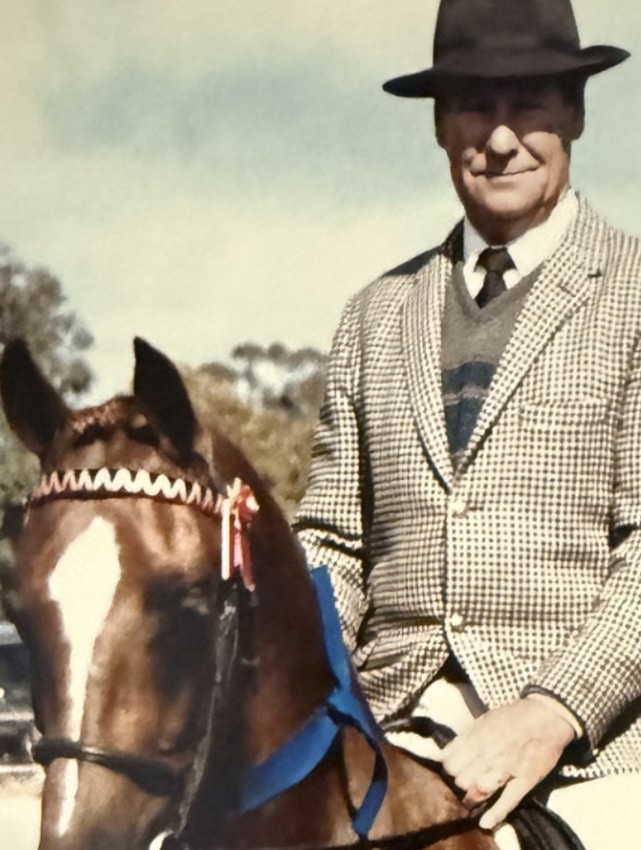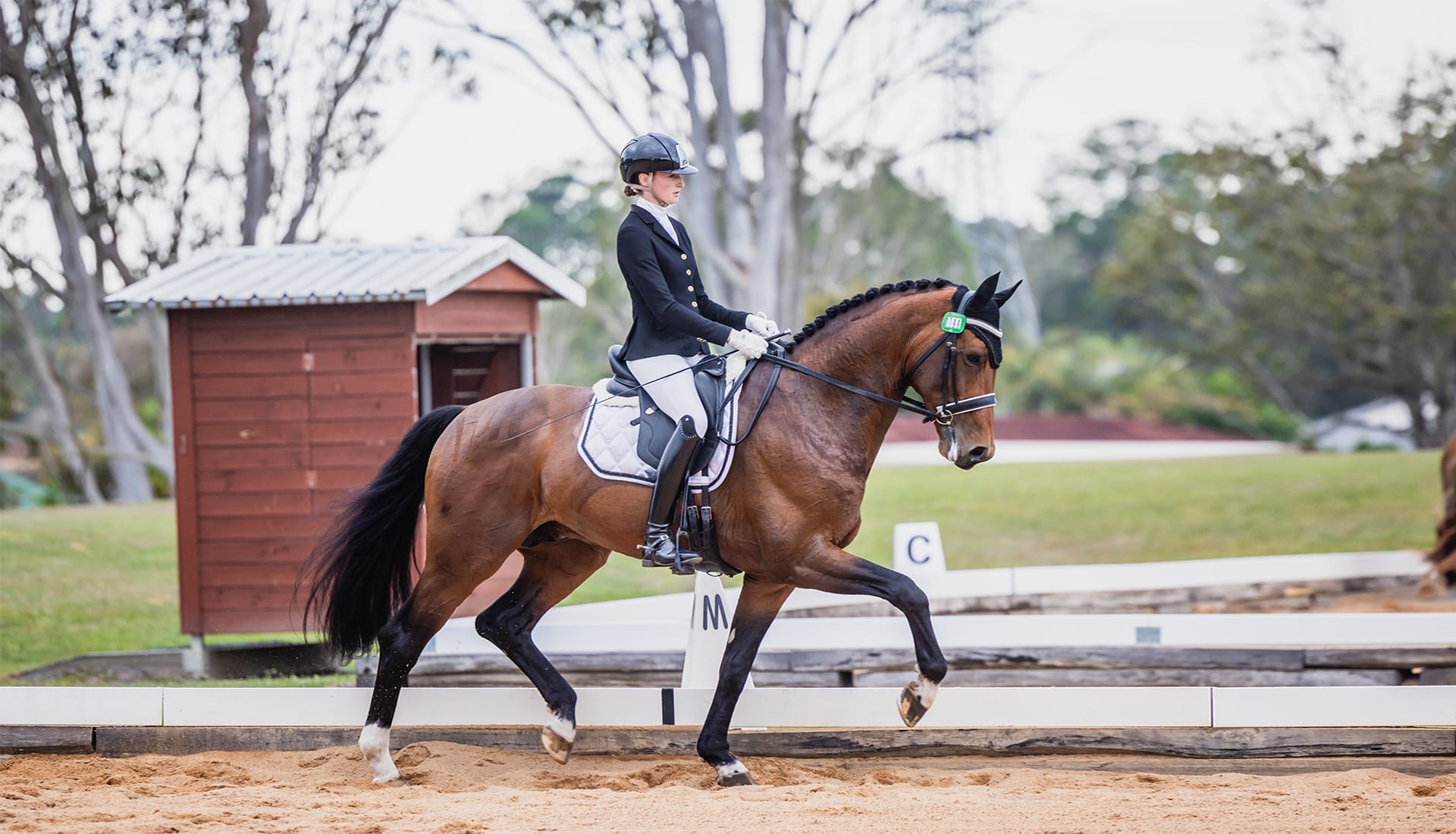Les Friend has been in the horse business for over 60 years. The aptly named gentleman from Goulburn, NSW, was recently recognised for his long service to the equestrian industry by Sport NSW, a tribute he can add to his many national and state coaching awards.
“I was also mentioned in the Legislative Assembly by our local member for dedication to the sport,” says the 82-year-old horseman who spoke to Equestrian Life prior to leaving for a major show to teach and warm up many of his competitive pupils.
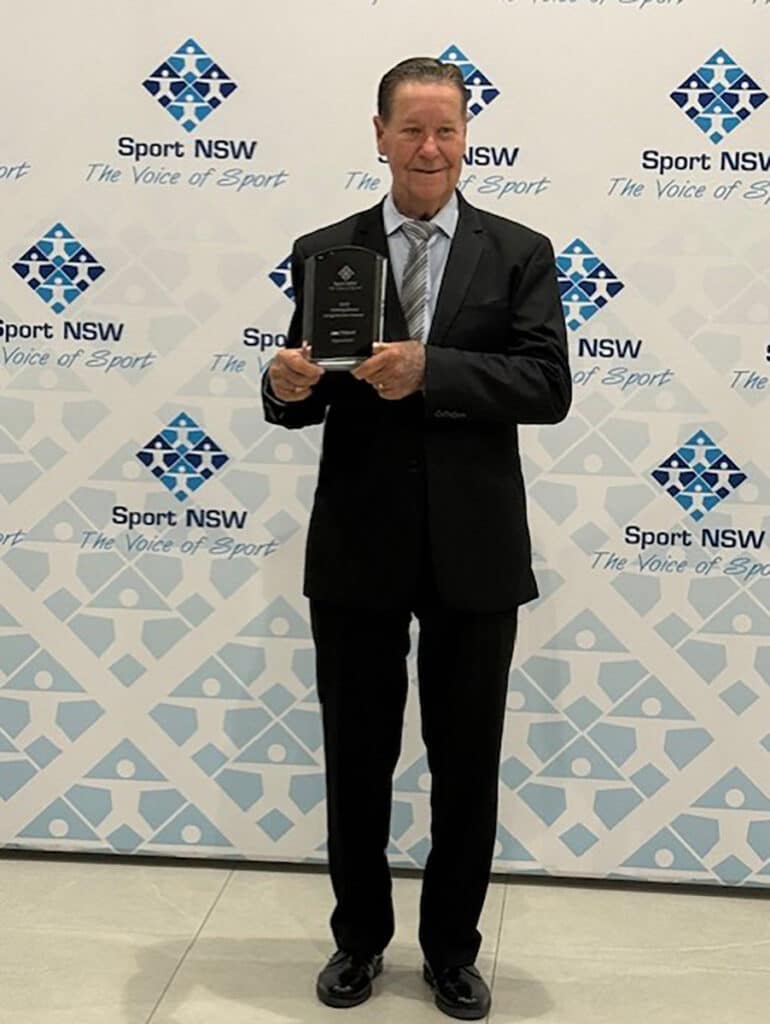
Les Friend recently received the Sport NSW Distinguished Long Service Award. Image supplied.
“I’ve always schooled
my horses in the
lateral movements.”
Apart from five years in Canberra, he has been based in and around Goulburn and been involved with horses since he was 12. His early working life was in the livestock-selling industry.
“My father, who used to win harness classes at Sydney Royal, died when I was 18 and I gave horses away, but eight years later I went back to them,” explains Les. “I was pestered by someone who I used to ride for at shows who wanted me to work with their mare. ‘She’s a really nice Thoroughbred but no one’s had any success with her – but we know you can do it’ they said.”
Les had a ride and subsequently resumed his life with horses. He also began teaching and has been doing so ever since.
When he married, he had a large bunch of horses and not all were show hacks. “My wife, Maureen, was keen on dressage and at one stage we had a horse off the track which we trained up to Prix St Georges/Intermediate 1 in three years.”
His competitive riding days finished after several back operations, but his teaching commitments increased, resulting in his giving clinics all over Australasia. Watching his lessons today it is quite apparent he embraces many dressage exercises.
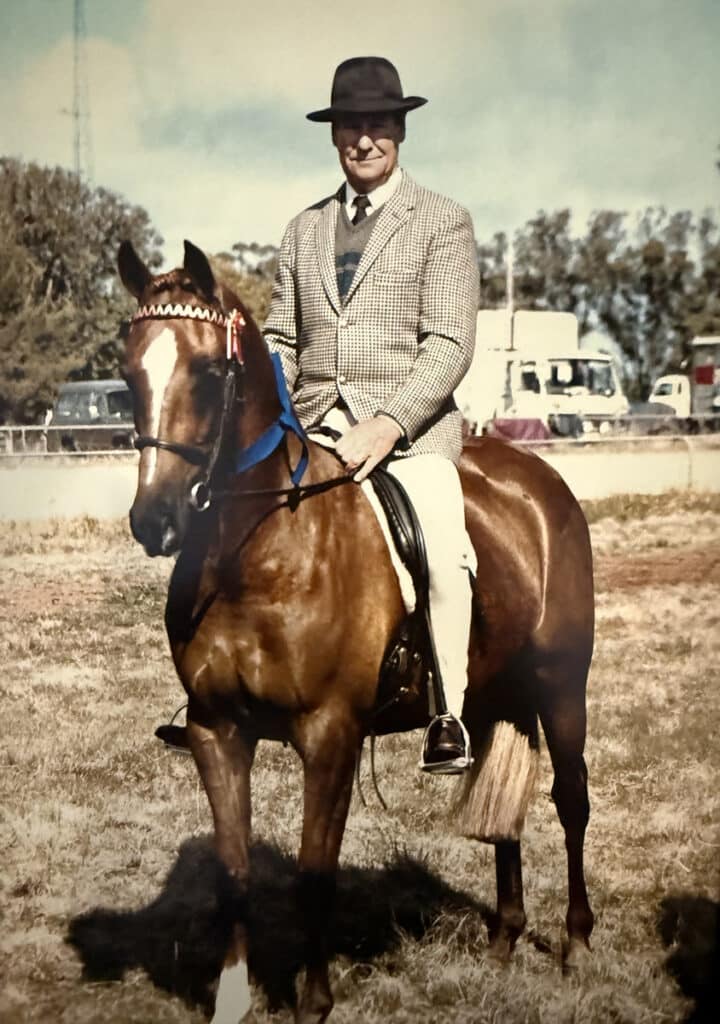
Les rode for many years, however his competitive riding days finished after several back operations. Image supplied.
“From the time they’re broken in I’ve always schooled my horses in the lateral movements,” he said. “You can’t get suppleness without these dressage basics, and this is what I teach to all my pupils. And they’re recognised for having a good sitting trot which I introduce early in their training. If you haven’t got a good sitting trot you have nothing.”
‘TAKE AWAY OUR STIRRUPS’
One of his early students was Rodney Martin, now an established dressage rider and trainer at Bowral, NSW. “I met Les more than 40 years ago when I was about 13,” recalls Rod. “I remember he wanted riders to sit – not rise – and their horses’ heads to be down. He taught my friend and me at the saleyards where he’d take away our stirrups and tell us to go up and down a hill doing the sitting trot until we could follow the horse. It really did work.
“He helped me a lot with ex-racehorses. When things would go wrong he’d make me stop then quietly say, ‘Okay, put the horse’s head down and when he gives, walk on… after five steps – halt again – repeat’. He was patient and methodical; plus, he was fanatical about position: ‘Put your legs in the right place and don’t slouch’.
“He got me to Sydney Royal where I won my riding class and the novice hack. I ride dressage now but Les taught me the important basics all those years ago. He’s a clever trainer who’d help anyone and deserves every one of his awards.”
“He’d take away our stirrups
and tell us to go up and down
a hill doing the sitting trot.”
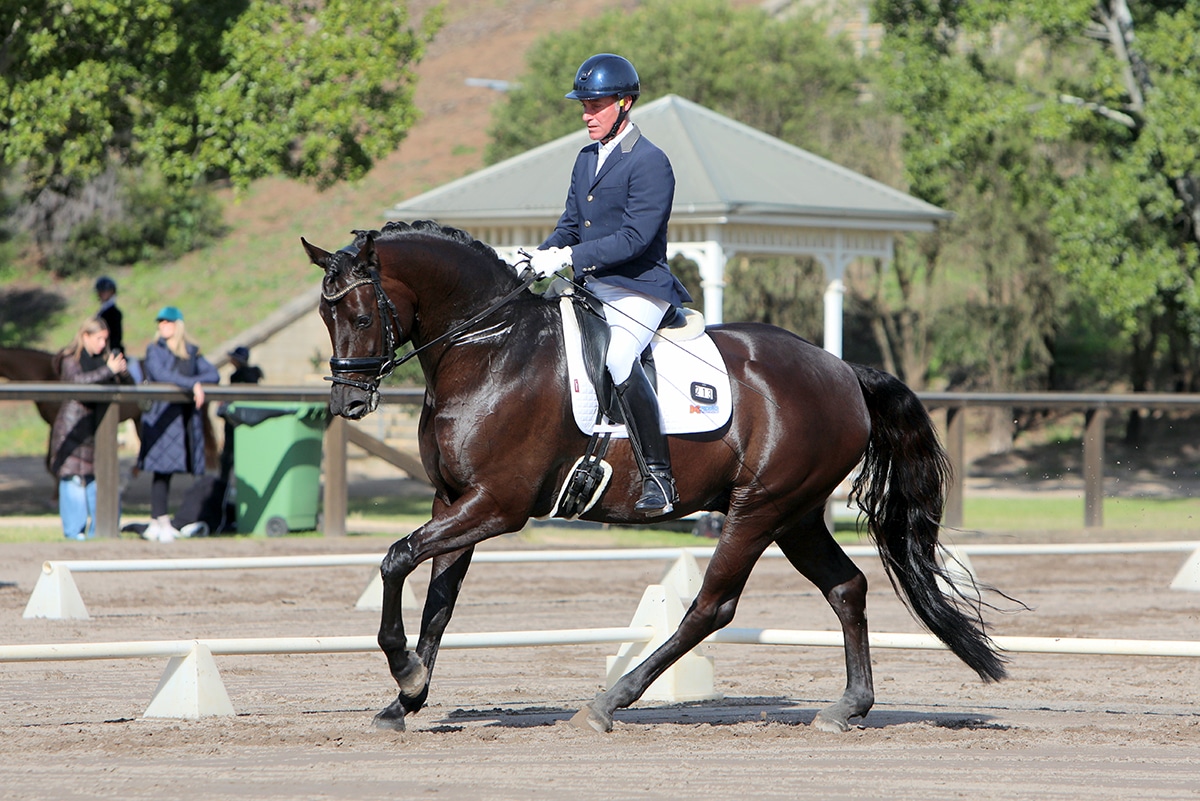
Dressage rider Rodney Martin, pictured here riding Emillio. Image by Roger Fitzhardinge.
And what does Les look for these days when a rider comes to him for a lesson for the first time? “I need to ensure they’re safe on that horse, then they must show me what they can do and where they’re up to. I assess how far I think they’re capable of going and decide how much pressure to put on them,” he explains.
“I have to give them every opportunity. If I don’t, someone might slip through the cracks who could have developed into a top rider or trainer; if instructors don’t do their jobs properly there’s a risk pupils won’t reach their potential.”
Of course, not every pupil goes on to win trophies, sashes and garlands but there are a great many who do – ardent, committed show riders regularly travelling around the country competing for major championships.
The ways of showing have changed over the years. There are new rules and regulations; different horse types have come in then out of fashion; saddlery, equipment and clothing are forever being redesigned – but what never changes is the fact there will always be someone who disagrees with the judge’s decision.
“I used to judge at shows and royals all over Australia, but I don’t do it now I have so many pupils,” Les tells me. “Not all show horse judges think the same. For example, they differ from each other about what a correct riding position should be.
“Many times I’ve stood at the side of the ring and said to a pupil, ‘You’re under that judge so ride with your hands right down on the wither’ or ‘if you want to win with that one keep your hands up’.”
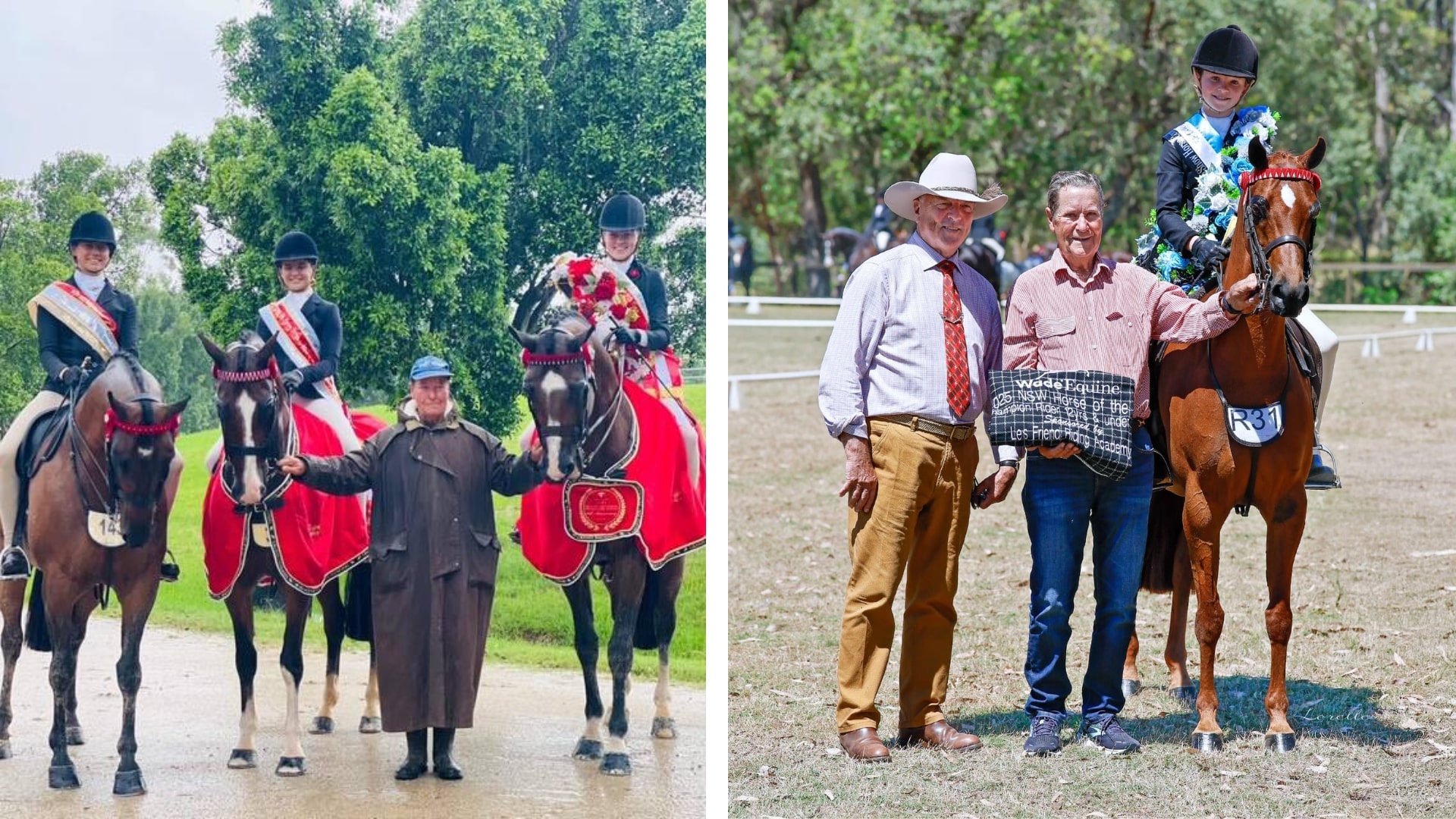
Left: Les Friend with his winning pupils. Right: John Paget and Les Friend with another winning pupil. Images supplied.
‘ARTIFICIAL AIDS’
One aspect of equipment which presently cheeses him off are large knee rolls on saddles. “As far as I’m concerned, they’re an artificial aid. I don’t care about the hack classes, but I dead set hate them in rider classes. If someone came before me with these great big knee blocks, they’d have to be exceptionally good for me to put them up.
“But while judges are awarding those in these kinds of saddles riders will continue using them.”
Les also has a few words to say about hunter classes in Australia. “The thing I don’t like is the putting up of extravagant-moving Warmbloods. They’re beautiful dressage horses but they don’t suit the criteria of a hunter hack.”
John Paget, royal show judge and ringmaster from Tennyson, NSW, is a long-time admirer of Les and agrees wholeheartedly with his view of big knee rolls. “I’ve been involved in the show scene for over 40 years, officiated at countless events and attended over 20 royals around the country,” says John. “The changes I’ve witnessed haven’t always been for the best. Big knee rolls on saddles, for instance, they’re just not appropriate for the ring as they don’t show off the horse well enough.
“I also feel many of the horses at home are worked too much just in an arena – they should be ridden out more. Les is always busy at the shows and he has a good strike rate for his pupils. I remember when he used to compete. He was always a gentleman in the ring and showed off his horses to their best advantage.
“At all the events he’s generous with his time and with his Les Friend Riding Academy sponsorships. An undeniable asset to the sport.”
Many of Les’s successful pupils started out with him as raw beginners. “It’s easy to coach a rider who’s already won sashes,” says Les, “but the thrill is having someone who came to you as a rank novice and they go on to be winners. I have eight and nine-year-olds who I’ve brought up to be champions – that’s what I really love about what I do.”
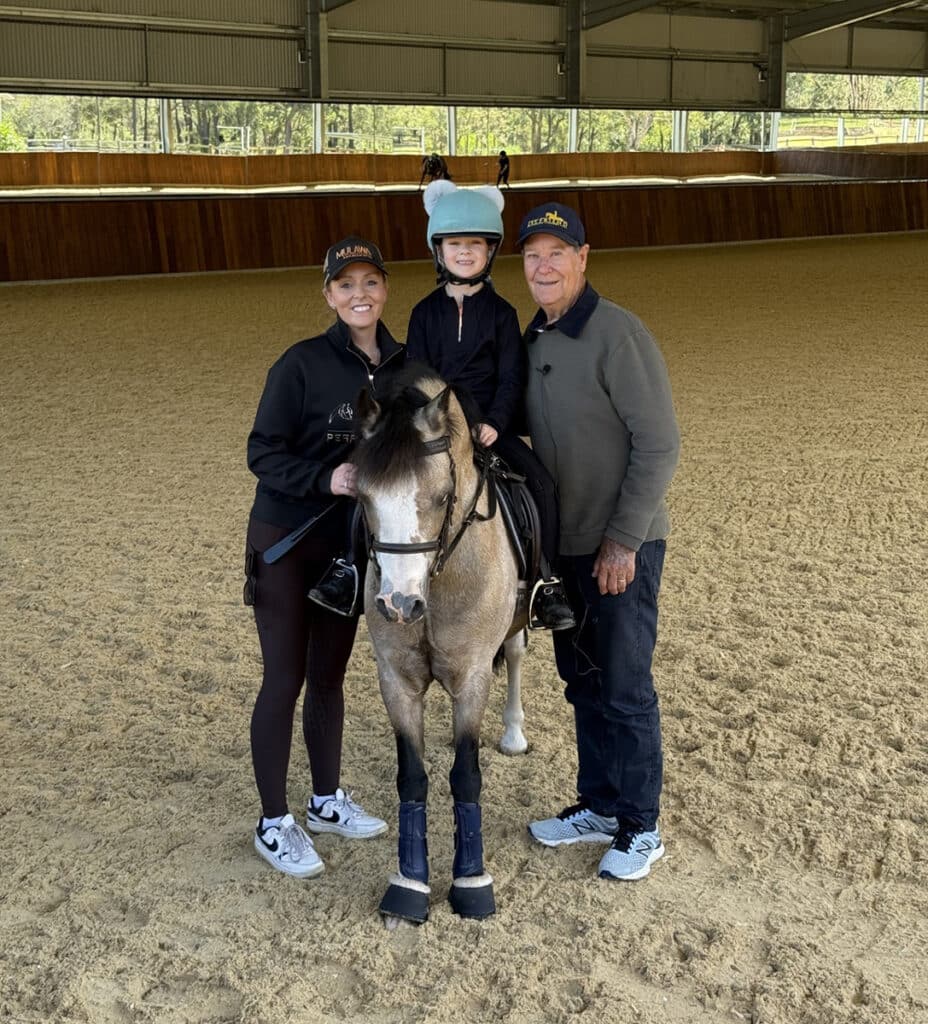
Jayna Bonney with daughter Ella and Les at Bellodair Park. Image supplied.
TWO-WAY RELATIONSHIP
That attitude to the relationship cuts both ways. An example is that of a lesson he gave to the daughter of Berrilee show and FEI dressage rider Jayna Bonney. “My daughter’s first lesson went well,” says Jayna. “It was held in the indoor at Ballodair Park, Wilberforce. Afterwards I asked what she would especially like to do next time and she quickly answered: ‘I want to learn all of the Les Things – when are we coming again?’ Ella is just a six-year-old – the journey has already begun!”
In recent years, because of the threat of litigation, there are many safety restrictions that Les has observed. “When I used to ride for champion, we were always made to swap horses – you can’t do that now and, of course, I’d never have a pupil ride without stirrups these days.”
And has he ever had to sack a student? “I had a very good rider in Canberra who was winning everywhere. I’d heard she had a bad temper but I’d never witnessed it. One day at a big show she didn’t win her class. She rode out of the ring and beat the horse over the head with her whip. I went over to her mother and told her, ‘I will never teach your daughter again – I am very sorry’. Her father then stopped her from having anything to do with horses.”
But that was the exception. “As far as I’m concerned everyone’s a potential Olympian until they prove otherwise,” says Les. “I have a great responsibility to those who come for lessons.”
May Les Friend continue to give these lessons for a very long time. EQ

